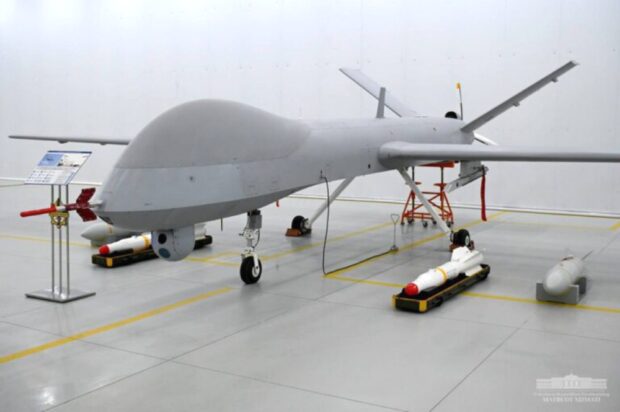China has revealed an ambitious plan to transform its military operations through the integration of more advanced unmanned systems, a strategic shift toward drone-led special operations in war scenarios including a potential conflict with the US over Taiwan.
The South China Morning Post (SCMP) reported this month that China’s military plans to replace humans with machines in special operations overseas to mitigate the high risks of such missions.
Scientists are working with the People’s Liberation Army (PLA) to develop unmanned aerial vehicles (UAVs) capable of flying vast distances, diving deep underwater and lying in wait for long periods, the SCMP report said.
The PLA’s 78092 unit has revealed details about a hypothetical overseas special operations plan published in the Fire Control & Command Control journal, aiming to help Chinese companies, engineers and scientists better understand the military’s needs and strategic goals.
The PLA’s plan says the hypothetical operation is set in 2035 when a small-scale conflict between China and an unnamed neighbouring country occurs, with the caveat that both sides agree to limit their equipment to small arms including small boats, drones and anti-aircraft guns.
In that 2035 scenario, the PLA is tasked with striking swiftly and silently at key enemy installations including critical command and supply hubs deep behind enemy lines.
The UAVs purpose-built for special operations must be capable of operating both alone and in coordinated swarms, flying at extremely low altitudes, navigating obstacles, engaging beyond visual range and pursuing and eliminating enemy forces, the SCMP report said.
It notes that advanced intelligence, surveillance and reconnaissance (ISR) systems must also allow them to hover over the battlefield after an initial attack, assess the damage and determine whether further action is required. The PLA team took inspiration from US military tactics, the report said.China has been relatively opaque about how it envisions using drones in a potential regional conflict so the Fire Control & Command Control journal article offers a rare glimpse of its drone warfare ambitions and intentions.
In an October 2023 article for the China Aerospace Studies Institute, Emilie Stewart notes that President Xi Jinping, the Chinese defense apparatus and the PLA have stated very little publicly about China’s drone swarm technology, strategy, research and development and how it would potentially use the systems in a conflict.
Stewart points out that most Chinese articles broadly describe drone swarms but do not mention any unique Chinese characteristics that would set the research apart from other drone scholars.
Stewart notes that in those articles drone swarms are defined similarly to the US Air Force definition while emphasizing the broad need for networking connectivity and autonomy.
Stewart also points out that most of those articles feature commentary on US drone swarm capabilities and bombastic reports of China’s capabilities which she says lack substance, meaning China’s reports of its drone capabilities should be taken with a grain of salt.
Nevertheless, China’s drone development may be following two trends. The first, pioneered by the US, focuses on developing long-range, high-end UAVs for strategic reconnaissance and precision strikes far from friendly territories.
US drones developed according to this philosophy include the MQ-9 Reaper and RQ-4 Global Hawk, both relatively expensive systems that are not considered expendable except under certain circumstances. In line with that trend, China has been using drones designed according to that philosophy in the East China Sea.
The second trend in drone development, spurred on by the ongoing Ukraine war, involves mass-producing cheap, expendable, tactical drones using commercial dual-use technology, the polar opposite of the previous trend of developing high-end, expensive drones. This trend is more apparent in China’s drone use in the Himalayas vis-à-vis India.
In a July 2023 report by the Foundation for Strategic Research, Antoine Bondaz and Simon Berthault note that, alongside advanced UAVs such as the CH-4, China has been using smaller tactical UAVs for logistical transport, border surveillance, combat damage assessment, artillery observation, sniper support, mine clearance, search and rescue, and communication support in the Himalayas.
Bondaz and Berthault note that China’s most prevalent drones in the Himalayas are commercial, showing China’s distinctive civil-military integration strategy.
Source: Asia Times

